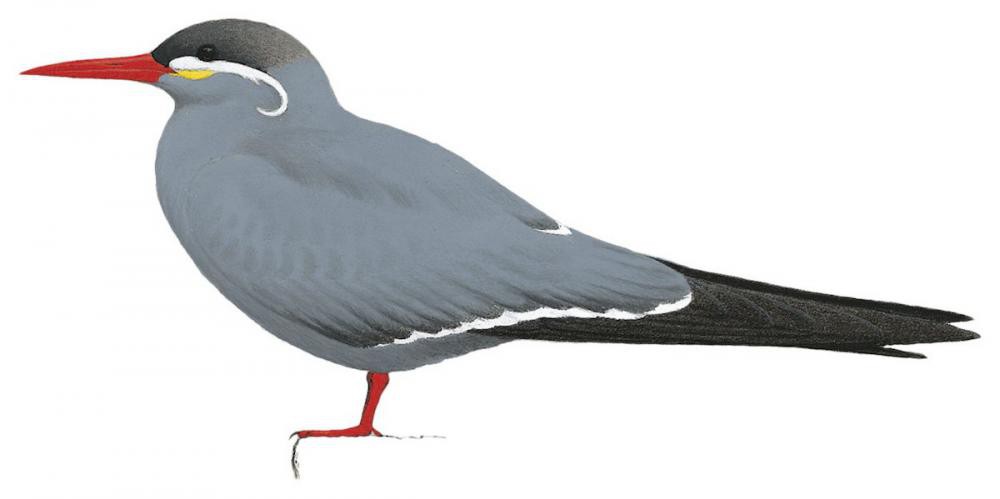Inca Tern / Larosterna inca

Inca Tern
SCI Name:
Protonym: Sterna Inca Voy.Coq. Atlas pl.47
Taxonomy: Charadriiformes / Laridae / Larosterna
Taxonomy Code: incter1
Type Locality: Lima, Peru.
Author: Lesson & Garnot
Publish Year: 1827
IUCN Status: Near Threatened
DEFINITIONS
LAROSTERNA
(Laridae; Ϯ Inca Tern L. inca) Portmanteau of genera Larus Linnaeus, 1758, gull, and Sterna Linnaeus, 1758, tern; from its large size and bill, dark plumage, and forked tail the Inca Tern was considered intermediate between the gulls and the terns; "Genus LAROSTERNA, Blyth. 1717. L. INCA (Voy. de la Coquille, pl. 47). SYN. Sterna inca, Lesson. HAB. Chili." (Blyth 1852); "Larosterna Blyth, Cat. Bds. Mus. As. Soc., 1849 (1852), p. 293. Type, by monotypy, Sterna inca Lesson." (Peters 1934, II, 344).
Synon. Inca, Naenia, Noddi, Sternolophota.
inca
Inca, the pre-conquest peoples of Peru and Bolivia (epithet generally given to species described from or found in those countries) (Coeligena, subsp. Geospizopsis unicolor, syn. Griseotyrannus aurantioatrocristatus, Larosterna, syn. Leptopogon taczanowskii, subsp. Paraclaravis mondetoura, syn. Psarocolius viridis (ex “Cassique vert de Cayenne” of d’Aubenton 1765-1781, pl. 328), subsp. Ramphastos cuvieri, syn. Rupornis magnirostris occiduus, Scardafella (here the epithet aztec (i.e. Mexican) would be more accurate), subsp. Tangara fulvicervix).
Inca
(syn. Larosterna Ϯ Inca Tern L. inca) Specific name Sterna inca Lesson, 1827; "INCA MYSTICALIS, JARDINE. ... Type, Sterna inca, Less. ... We do not advocate the multiplication of genera, particularly in a group numbering only from eighty to ninety species; but we do think that this bird has claims stronger and more peculiar than some others; and if by any ornithologists it is thought worthy of a subgeneric separation, we have drawn its characters under the title of Inca. We consider it a most interesting form, drawing closer the alliance between the Laridæ and Pelicanidæ; for wherever we place Phäeton, whether with the first or last, this bird is the intermediate step; and we may also think that we see the white lengthened feathers, occurring during the breeding season in many of the Cormorants, repeated in the beautiful white plumes of Inca mysticalis." (Jardine 1850); "Inca (not of Lepeletier and Serville, 1825) Jardine, Contr. Orn., 1850, p. 33—type, by tautonymy, Sterna inca Lesson and Garnot." (Hellmayr & Conover 1948, XIII, 329).
UPPERCASE: current genus
Uppercase first letter: generic synonym
● and ● See: generic homonyms
lowercase: species and subspecies
●: early names, variants, mispellings
‡: extinct
†: type species
Gr.: ancient Greek
L.: Latin
<: derived from
syn: synonym of
/: separates historical and modern geographic names
ex: based on
TL: type locality
OD: original diagnosis (genus) or original description (species)












